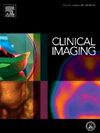Ethical principles for practice building in the era of targeted radioligand therapy
IF 1.8
4区 医学
Q3 RADIOLOGY, NUCLEAR MEDICINE & MEDICAL IMAGING
引用次数: 0
Abstract
Theranostics is emerging as a critical pillar of oncologic management, as exemplified by the success of Lu-177-PSMA-617 for the treatment of castration-resistant prostate cancer. The emergence of such theranostic agents represents an opportunity to reconsider facets of nuclear medicine practice that will enable its engagement in high-volume radioligand delivery. In this article, we aim to explore simple ethical principles that can guide the development of theranostics programs as radiopharmaceutical agents proliferate and the typical nuclear medicine physician transitions from a primarily diagnostic role to a mixed diagnostic and therapeutic role. Such a mixed role will demand all the attendant competencies of direct patient care. We argue that restructuring nuclear medicine practice to meet this challenge involves developing processes for promoting the principle of fairness in patient selection for theranostic agents and for promoting the principle of responsibility during the administration of theranostic agents. We further specify that this responsibility extends to the patient receiving the therapy, the local community of the patient, and the general community exposed to the population of patients receiving theranostic agents.
Précis
The expansion of radioligand therapy requires promoting the ethical principle of fairness in patient selection and the ethical principle of responsibility in the delivery of radioligand therapy.
靶向放射性配体疗法时代实践建设的伦理原则。
Theranostics 正在成为肿瘤治疗的一个重要支柱,Lu-177-PSMA-617 治疗耐受性前列腺癌的成功就是例证。这种治疗药物的出现为重新考虑核医学实践的方方面面提供了机会,使其能够参与大量放射性配体的递送。在本文中,我们旨在探讨一些简单的伦理原则,随着放射性药物制剂的激增以及典型核医学医生从以诊断为主向诊断和治疗混合角色的转变,这些原则可以指导治疗学项目的发展。这种混合角色需要具备直接护理病人的所有相关能力。我们认为,重组核医学实践以应对这一挑战,需要制定程序,在选择患者使用治疗药物时促进公平原则,在使用治疗药物期间促进责任原则。我们进一步明确,这一责任延伸至接受治疗的患者、患者所在社区以及与接受治疗药物的患者群体接触的一般社区。PRéCIS:要扩大放射性同位素治疗的范围,就必须在选择病人时提倡公平的伦理原则,在提供放射性同位素治疗时提倡负责任的伦理原则。
本文章由计算机程序翻译,如有差异,请以英文原文为准。
求助全文
约1分钟内获得全文
求助全文
来源期刊

Clinical Imaging
医学-核医学
CiteScore
4.60
自引率
0.00%
发文量
265
审稿时长
35 days
期刊介绍:
The mission of Clinical Imaging is to publish, in a timely manner, the very best radiology research from the United States and around the world with special attention to the impact of medical imaging on patient care. The journal''s publications cover all imaging modalities, radiology issues related to patients, policy and practice improvements, and clinically-oriented imaging physics and informatics. The journal is a valuable resource for practicing radiologists, radiologists-in-training and other clinicians with an interest in imaging. Papers are carefully peer-reviewed and selected by our experienced subject editors who are leading experts spanning the range of imaging sub-specialties, which include:
-Body Imaging-
Breast Imaging-
Cardiothoracic Imaging-
Imaging Physics and Informatics-
Molecular Imaging and Nuclear Medicine-
Musculoskeletal and Emergency Imaging-
Neuroradiology-
Practice, Policy & Education-
Pediatric Imaging-
Vascular and Interventional Radiology
 求助内容:
求助内容: 应助结果提醒方式:
应助结果提醒方式:


